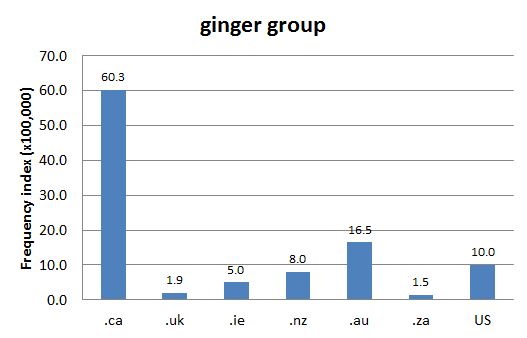DCHP-2
ginger group "ginger" group, Ginger Group DCHP-2 (April 2016)
n. — Politics
within a political group, a more progressive or radical wing.
Type: 5. Frequency — The term is of British origin. Following an incident in the British parliament (see the 1916 quotation), Canadian ginger groups appeared on the heels of the British ones. What appears to be Canada's first ginger group was opposed to compulsory conscription during World War I (Canadian Encyclopedia reference, from 1917 onwards), as shown in the earliest evidence (see the 1918 quotation). Since then, there have been a number of ginger groups, as shown in DCHP-1. An important ginger group in the Canadian context was the 1924 group splitting from the Progressive party over the issue of whether elected members are free to represent the voices of their constituents regardless of their party's stance (see the 1924 quotation and the Canadian Encyclopedia reference).
See also COD-2, s.v. "ginger group", which is marked "Cdn & Brit", Gage-5, s.v. "Ginger Group", which is marked "Cdn.", ITP Nelson, s.v. "Ginger Group", which is described as in the "Canadian House of Commons", and OED-3, s.v. "ginger" (C1d), W-3, s.v. "ginger group", which is marked "chiefly Brit", AHD-5, s.v. "ginger group, which is marked "Chiefly British".- In OED-3, the term is said to denote "a group, person, etc., which provides the ‘ginger’, spirit, or stimulus of a party or movement". Also see W-3 and AHD-5.
References:
- AHD-5
- COD-2
- Canadian Encyclopedia s.v. Ginger Group Accessed 21 Nov. 2015
- DCHP-1
- Gage-5
- ITP Nelson
- OED-3
- W-3
Images:
Chart 1: Internet Domain Search, 13 Aug. 2012
